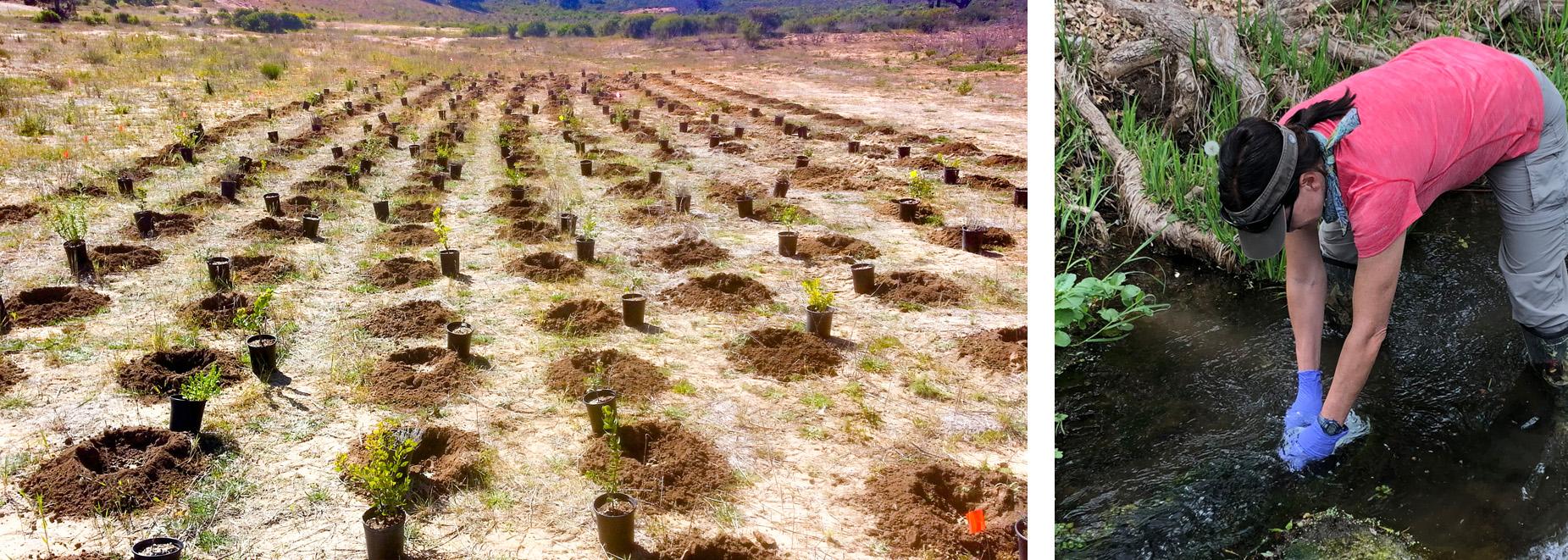In the delicate tapestry of our planet’s ecosystems, every thread matters. Each species, from the majestic tiger prowling through dense jungles to the vibrant coral reefs teeming with life, plays a vital role in maintaining the balance of nature. Yet, as human activity continues to encroach upon their habitats, many of these remarkable beings find themselves on the brink of extinction. The urgency to act has never been greater. In this article, we delve into innovative and practical strategies aimed at safeguarding endangered species, exploring the collaborative efforts of conservationists, communities, and policymakers. Together, we can illuminate the path toward a future where biodiversity flourishes, and the natural world is preserved for generations to come. Join us as we uncover the measures necessary to protect our planet’s irreplaceable treasures.
Table of Contents
- Innovative Approaches to Habitat Restoration
- Building Bridges Between Communities and Conservation
- Empowering Local Stewardship for Sustainable Practices
- Harnessing Technology for Wildlife Protection and Monitoring
- Final Thoughts
Innovative Approaches to Habitat Restoration

In the quest to revive the planet’s ecosystems, innovative strategies are emerging that blend technology with nature’s resilience. One such approach is the use of drones for monitoring restoration areas. Equipped with high-resolution cameras and mapping software, these drones can assess vegetation health and track wildlife movements, providing invaluable data without disturbing the habitats. Additionally, bioengineering techniques such as constructing artificial reefs and creating living shorelines have gained traction. These efforts not only restore natural structures but also enhance biodiversity by providing new habitats for vulnerable species. Entrepreneurs and researchers are collaborating to combine engineering with ecology, developing sustainable solutions that are both effective and environmentally friendly.
Another forefront of habitat restoration is the integration of community involvement into restoration projects. Local knowledge and participation can lead to a deeper understanding of the ecosystems and foster a sense of stewardship. Engaging communities in monitoring and maintaining restoration efforts has proven beneficial, as it cultivates a connection to the land. Programs that incorporate citizen science initiatives allow volunteers to collect data and contribute to conservation efforts, enhancing both education and engagement. Furthermore, creating incentive-based programs encourages landowners to participate in restoration activities, ensuring that private lands contribute positively to the overall health of the environment. Together, these strategies highlight a multifaceted approach to restoring habitats, encouraging creativity and collaboration for better outcomes.
| Strategy | Description | Benefits |
|---|---|---|
| Drone Technology | Using drones for monitoring vegetation and wildlife | High efficiency, minimal disturbance |
| Bioengineering | Constructing artificial reefs and living shorelines | Enhanced biodiversity, habitat creation |
| Community Engagement | Involving locals in restoration and monitoring | Local stewardship, stronger connection to land |
| Citizen Science | Volunteers collect data and support conservation | Educational impact, increased public involvement |
| Incentive Programs | Encouraging landowners to engage in restoration | Broader landscape impact, shared responsibility |
Building Bridges Between Communities and Conservation

Effective conservation efforts hinge on collaboration between diverse communities and stakeholders. By fostering relationships between local residents and conservation organizations, we can instill a sense of ownership and responsibility towards endangered species. This collaboration can take various forms, including community-led conservation initiatives, educational programs, and cultural events that celebrate local biodiversity. Engaging communities ensures that conservation strategies are not only scientifically sound but also culturally relevant and sustainable in the long run. Highlighting success stories, such as the revival of endangered species through community engagement, can motivate others to participate in similar initiatives.
To facilitate deeper connections between communities and the natural environment, some essential strategies must be prioritized:
- Awareness Campaigns: Implementing outreach programs that educate the public about local endangered species and their ecosystems.
- Participatory Research: Involving community members in data collection and monitoring efforts to increase their stake in conservation outcomes.
- Incentivizing Collaboration: Providing funding or resources for joint ventures between conservationists and local communities.
| Strategy | Description |
|---|---|
| Community Workshops | Hands-on sessions that educate locals about conservation techniques. |
| Eco-Tourism | Encouraging visitors to explore natural habitats, benefiting both locals and wildlife. |
| Local Governance | Empowering community leaders to make decisions about land use and conservation. |
Empowering Local Stewardship for Sustainable Practices
Local communities hold the key to fostering sustainable practices that can have a lasting impact on the environment. By embracing stewardship, individuals can actively engage in initiatives that support the preservation of ecosystems and endangered species. This empowerment can take multiple forms, including:
- Community-led conservation programs: Collectively organizing efforts to protect local flora and fauna.
- Educational workshops: Hosting sessions to educate others on the importance of biodiversity and conservation.
- Volunteer initiatives: Participating in local clean-ups, habitat restoration events, and wildlife monitoring projects.
Leveraging local resources and knowledge can enhance the effectiveness of sustainability efforts. Creating partnerships between residents, schools, and local governments can lead to tailored strategies that resonate with the unique environmental challenges faced by each community. Consider establishing supporting systems such as:
| Strategy | Description |
|---|---|
| Local Wildlife Sanctuaries | Designated areas for endangered species to thrive and recover. |
| Community Gardens | Promoting native plants to support local pollinators and ecosystems. |
| Sustainable Practices Training | Workshops focused on environmentally friendly farming and conservation methods. |
Harnessing Technology for Wildlife Protection and Monitoring
Advancements in technology have opened up unprecedented avenues for wildlife conservation. Innovative tools like drones, camera traps, and satellite imagery allow researchers to monitor vast stretches of wilderness without disturbing the delicate ecosystems they seek to protect. Drones, for example, enable conservationists to survey hard-to-reach habitats, gathering vital data on animal populations and habitat changes. Meanwhile, camera traps equipped with motion sensors capture astonishing footage of wildlife, providing real-time insights into animal behavior, migration patterns, and even human-wildlife interactions.
Moreover, data analytics and artificial intelligence increasingly play pivotal roles in the realm of environmental protection. By employing machine learning algorithms, conservationists can analyze vast datasets, identifying trends and predicting potential threats to endangered species. The integration of mobile applications also empowers local communities to report poaching activities or habitat destruction instantaneously. As technology continues to evolve, it holds the promise of enhancing both the efficiency and effectiveness of conservation efforts, ensuring that the voices of endangered species are not silenced in the face of growing global challenges.
Final Thoughts
As we draw our exploration of “” to a close, it becomes increasingly clear that the fate of our fragile ecosystems rests in our hands. Each strategy we’ve discussed serves as a thread in the intricate tapestry of life that sustains our planet. The choices we make today can echo through generations, shaping not only the survival of endangered species but also the health of our environment as a whole.
Embracing conservation isn’t merely about the protection of wildlife; it’s about recognizing our interconnectedness with the natural world. By fostering sustainable practices, supporting local and global initiatives, and nurturing a collective responsibility, we can help ensure that future generations inherit a thriving planet—one teeming with diverse flora and fauna, where every species has its place.
Let us be the stewards of change, extending our commitment beyond mere words to action. Together, we can forge a path towards a harmonious coexistence with nature, where the beauty and diversity of life are not only preserved but celebrated. The time to act is now, and each step we take today can illuminate the way forward—toward a future where endangered species no longer teeter on the brink, but flourish in the vibrant ecosystems they call home.



